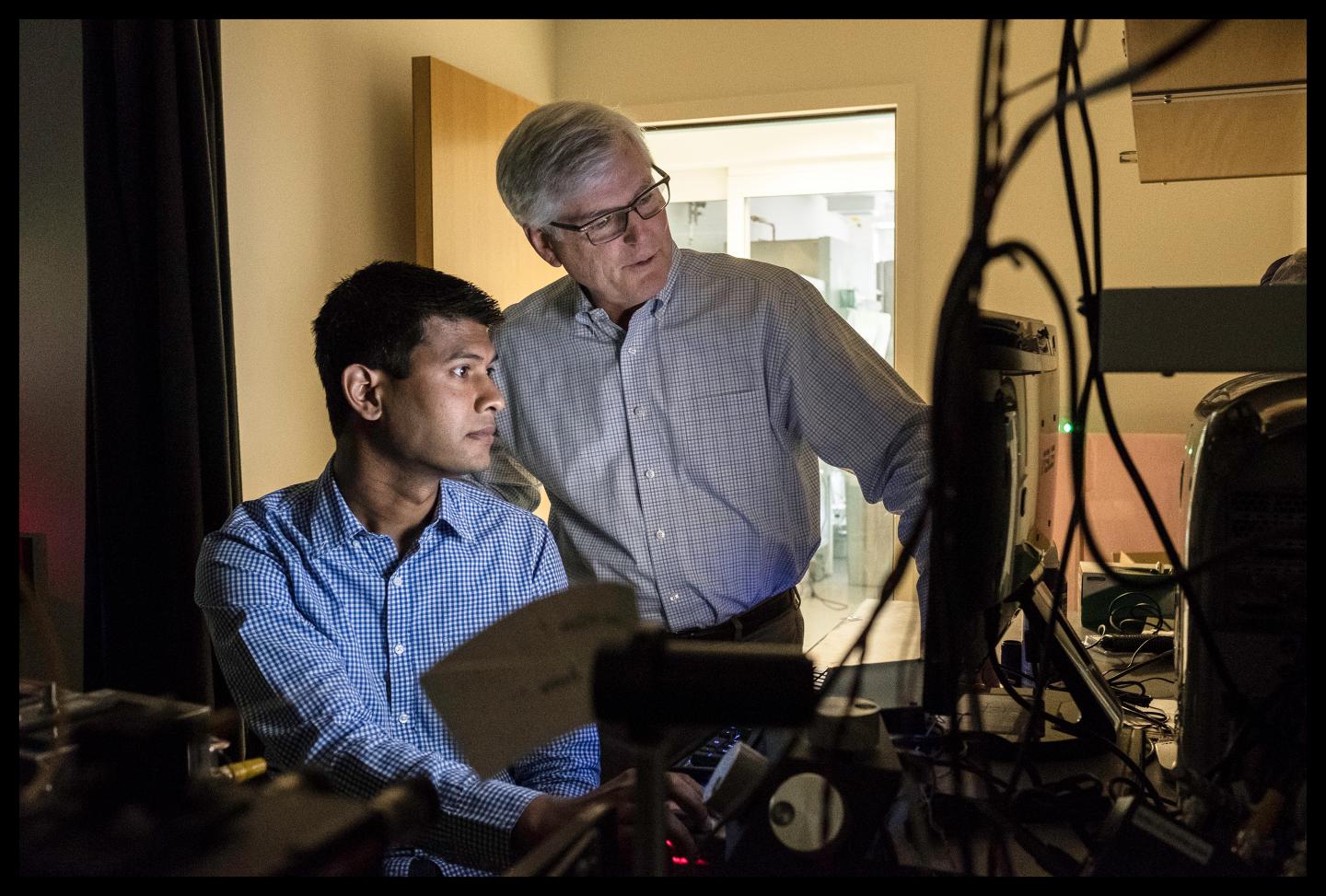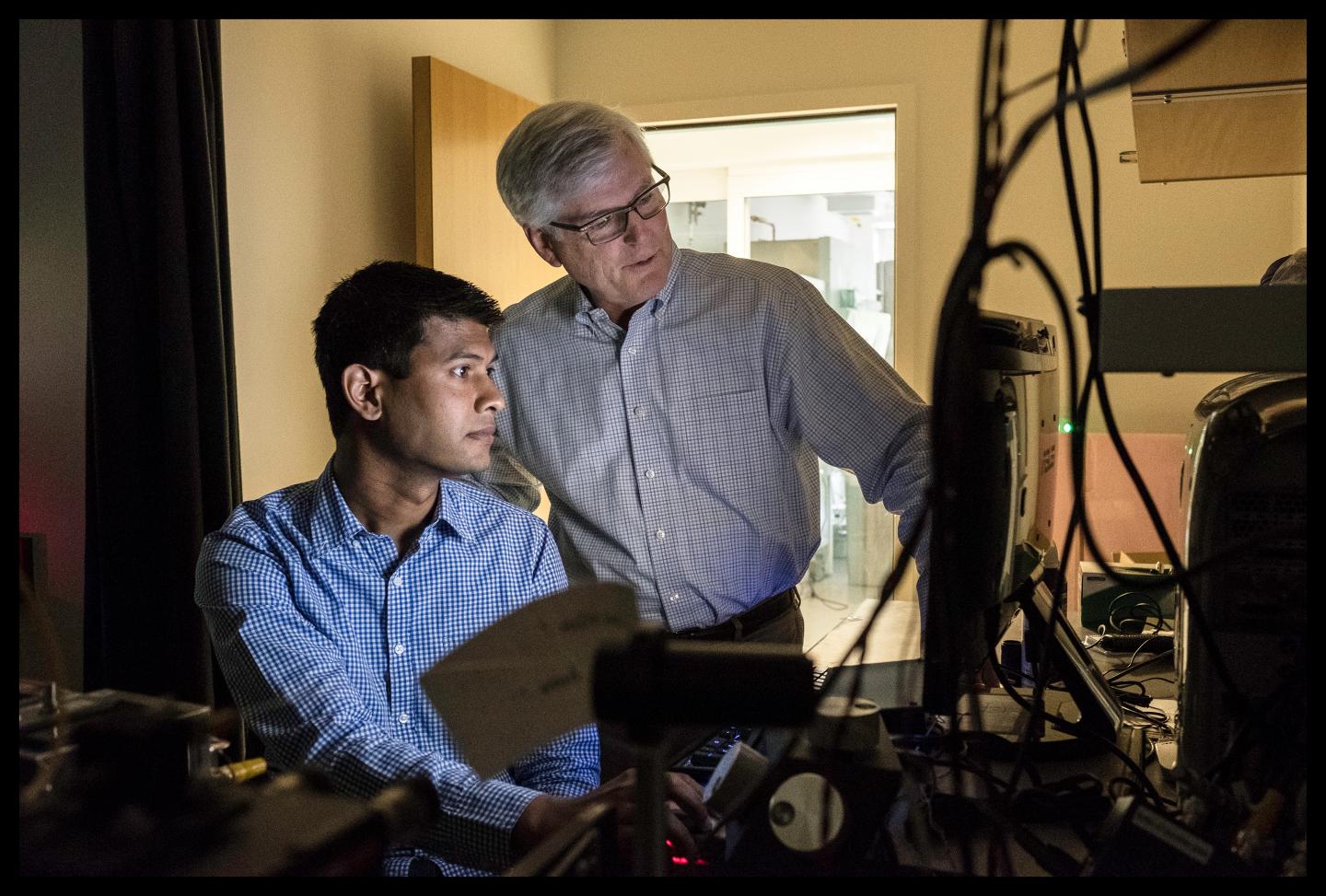
Credit: BD Colen
Harvard Stem Cell Institute (HSCI) scientists have taken the first steps toward developing a treatment that would make bone marrow – blood stem cell – transplantation safer and, as a result, more widely available to the millions of people living with blood disorders like sickle cell anemia, thalassemia, and AIDS.
Bone marrow transplantation currently is the only curative therapy for these blood diseases. But, for the new, transplanted stem cells to do their work, the faulty stem cells must first be "evicted" or killed. Accomplishing that requires patients endure chemotherapy and radiation — a vicious assault on the body with life-long consequences.
In a study recently published in the journal Nature Biotechnology, HSCI researchers at Harvard University and Massachusetts General Hospital (MGH), in collaboration with Boston Children's Hospital and Dana Farber Cancer Institute, have developed a non-toxic transplantation procedure using antibodies to specifically target blood stem cells in mice, an approach they hope will make blood stem cell transplants for these patients far less toxic.
The new treatment removes more than 98% of blood stem cells, making it as effective as chemotherapy and radiation.
"Instead of using non-targeted drugs that have lots of collateral damage we thought we could take advantage of the precision of the immune system, in particular, antibodies," said David Scadden, MD, Co-director of HSCI, the Gerald and Darlene Jordan Professor of Medicine at Harvard University, and senior author on the paper.
As part of the immune system, antibodies naturally seek and destroy foreign agents in the body. Rahul Palchaudhuri, a postdoctoral fellow in Scadden's lab and first author on the paper, armed CD45-targeting antibodies with a payload that destroys only existing blood cells. The payload kills cells by means other than genetic destruction, in contrast to the current standard treatments.
"Antibodies are remarkably specific in what they target," said Palchaudhuri, a chemist by training, with a background in cancer research. "We can direct them to CD45, a cell marker which is exclusively expressed in the blood system. That way we avoid toxicities to non-blood tissues."
Unlike chemotherapy and radiation — which indiscriminately damage cells and tissues, healthy or otherwise — the CD45-targeting antibodies leave the thymus and the bone marrow, environments critical to the formation of T cells and innate immune cells, unharmed. Animals receiving the antibody treatment were able to withstand infection that was lethal to mice treated with radiation. Currently, infections after transplant are common and may be severe, causing death in a substantial number of people.
About one in ten patients do not survive transplantation following the standard treatments. Those who do may suffer from stunted growth and intellectual development, infertility, and damaged DNA; at present, patients can only attempt a curative transplant by increasing their risk of developing cancer later.
Because of this, families and doctors often shrink from transplant options, particularly when it comes to treating children, and it will limit the extent to which the breakthroughs in gene therapy and gene editing will be applied, explained Scadden, who is a practicing hematologist at MGH and chairman of Harvard's Department of Stem Cell and Regenerative Biology.
Animals that received the antibody treatment had a broad ten-day window within which they could accept a bone marrow transplant, and individuals that did not receive a bone marrow transplant were able to fully recover without adverse effects. Furthermore, mice suffering from sickle cell anemia were successfully transplanted using the antibody method and cured of their anemia. Should the same hold true for humans, what amounts to months of recovery in a hospital bed may be replaced by an outpatient procedure, and a failed transplant would not be fatal.
"If this approach works in humans, it will really change the conversation that providers have with patients," Scadden said, especially for those "who have these underlying genetic disorders and for who the new gene-editing and gene therapy techniques are being developed."
The scientists are now trying to identify antibodies that would be effective in humans, and a company has been formed to move the work towards translation and determine which models are most useful in a preclinical setting.
"It brings precision medicine into the area of transplant in a way that hasn't been there and is needed," Scadden said.
###
This work was supported by the Harvard Blavatnik Biomedical Accelerator Fund and the National Institutes of Health.
Media Contact
BD Colen
[email protected]
617-495-7821
@HarvardMed
http://hms.harvard.edu





